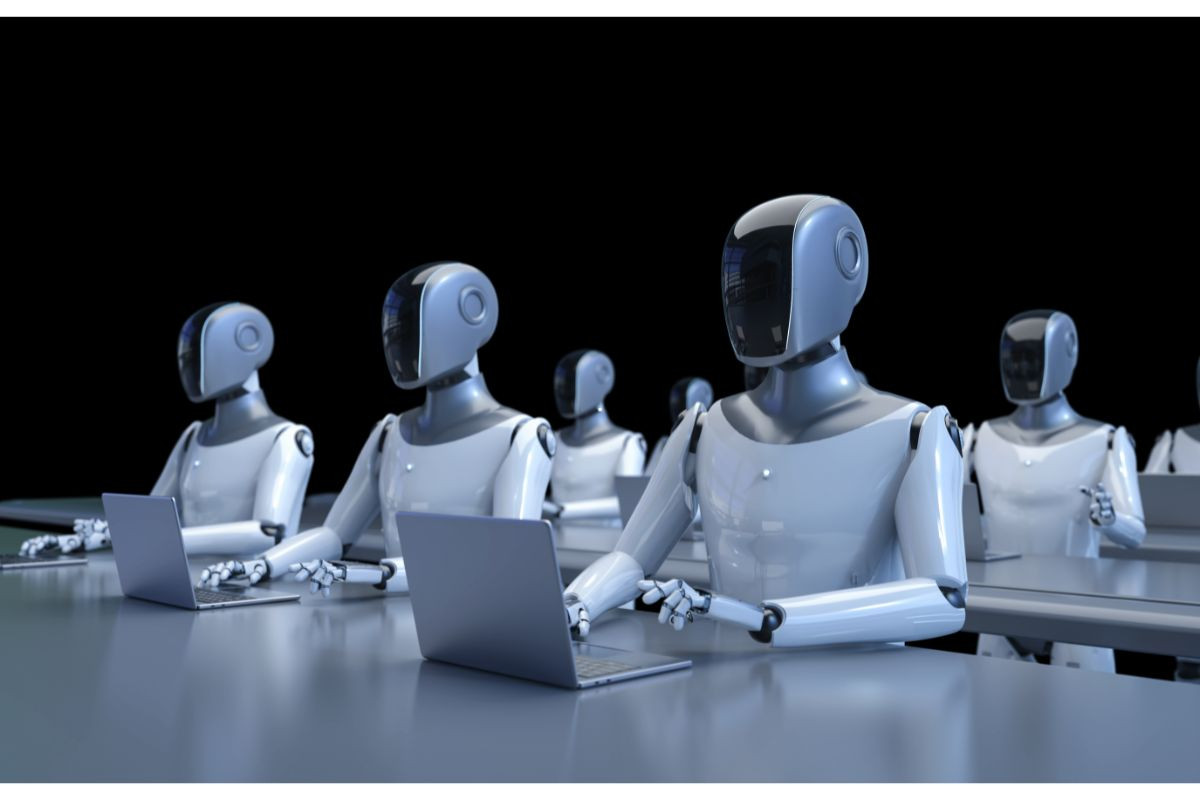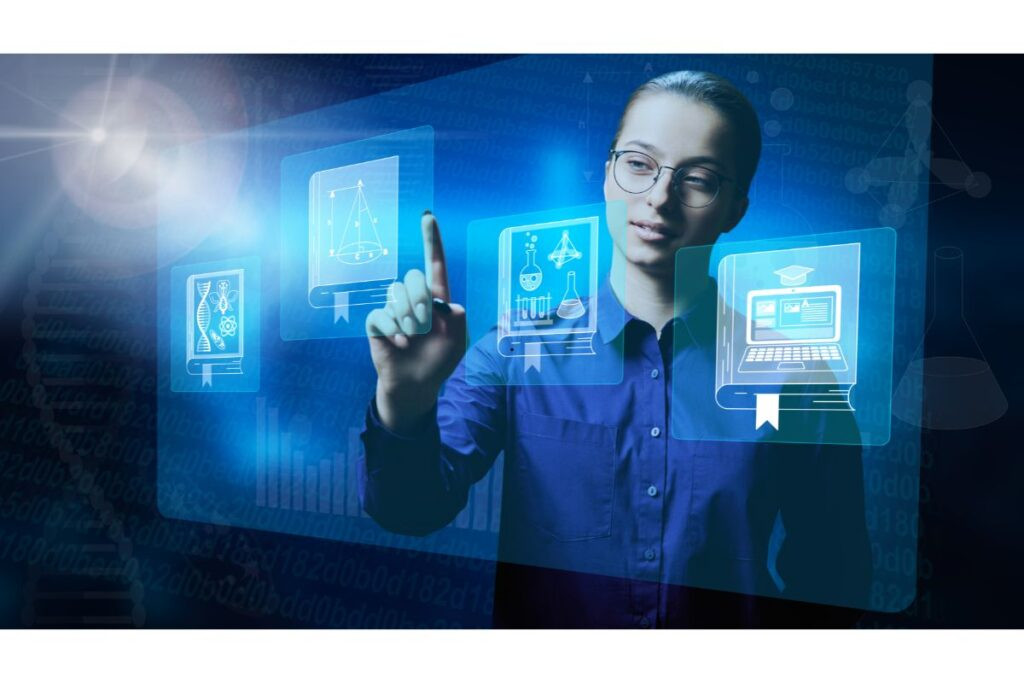AI Learning Tools Future 2030: What to Expect

The future of education is rapidly evolving, and the integration of AI learning tools is transforming the way we learn and teach. By 2030, AI-powered technologies will be at the forefront of education, enhancing the learning experience in ways we never imagined. But what does this future look like? Let’s dive into the exciting possibilities for AI learning tools in the coming decade.
AI Learning Tools in 2030: A Revolution in Education
Imagine a world where personalised learning is the norm, where every student receives a tailored education tailored to their unique needs and strengths. By 2030, AI learning tools will make this a reality.
Personalized Learning Experiences
AI will be able to analyze your learning style, pace, and strengths to offer customized lessons. No more one-size-fits-all education. These tools will ensure that you receive lessons explicitly tailored to your learning style.
“AI will enable the creation of personalized educational experiences that adapt to each student’s needs, making learning more efficient and enjoyable.” – Dr. Emma Harris, AI Education Specialist.
Real-Time Feedback and Adjustments
In 2030, AI-powered learning tools will be able to provide immediate feedback as you work through lessons. Whether it’s correcting a math problem or suggesting a more efficient way to structure an essay, AI will guide you in real time, helping you improve faster.
Adaptive Learning Paths
Forget about rigid curriculums. AI will help create adaptive learning paths that adjust in real-time based on your progress. For example, if you master a topic quickly, the AI will accelerate your lessons. On the other hand, if you’re struggling, it will offer additional resources to reinforce your understanding.

The Role of AI in Teachers’ Work
While AI will significantly enhance students’ learning experiences, it will also transform the role of teachers.
Teachers as Facilitators, Not Lecturers
AI learning tools will automate many of the administrative and repetitive tasks that teachers currently perform. This includes grading, tracking student progress, and even providing supplementary lessons. With these tasks automated, teachers will have more time to focus on facilitating discussions, guiding students, and addressing individual learning needs.
Empowering Teachers with Data
AI will provide teachers with detailed insights into each student’s progress, learning habits, and areas of difficulty. These data-driven insights will allow teachers to tailor their approach even further, ensuring that no student is left behind.
The Technology Behind AI Learning Tools in 2030
AI learning tools won’t just be based on simple algorithms—they’ll harness the full power of cutting-edge technology to deliver highly effective educational experiences.
Natural Language Processing (NLP)
NLP will allow AI to understand and interact with students in a conversational way. Imagine having a virtual tutor who can explain complex topics in simple terms, answer questions, and even engage in detailed discussions. By 2030, NLP will be a significant component of AI learning tools.
Machine Learning for Continuous Improvement
As AI systems interact with students, they’ll continue to learn and improve. This means that the more you use AI learning tools, the smarter and more accurate they will become. This self-improvement feature will ensure that the technology remains relevant and practical for years to come.
Virtual Reality (VR) and Augmented Reality (AR) Integration
By 2030, AI will integrate seamlessly with VR and AR to create immersive learning environments. Imagine learning about history by stepping into ancient Rome or conducting chemistry experiments in a virtual lab. This technology will make learning more engaging and accessible, even for complex or hazardous subjects.
Case Studies: Real-World Examples of AI Learning Tools
AI in Higher Education: A Case Study
In universities, AI has already begun to shape the way students learn. In 2023, the University of California introduced AI-powered tools to support students in their academic pursuits. The system provides personalized learning pathways, real-time feedback, and recommendations for additional resources. As a result, students showed a 15% improvement in retention rates.

AI-Powered Tutoring Systems for K-12 Education
In the K-12 sector, companies such as DreamBox and Squirrel AI are already utilising AI to deliver personalised tutoring. These tools track students’ progress and adjust the learning material in real time, ensuring that each child moves at their own pace. By 2030, such tools will become widely available, helping millions of students worldwide.
Potential Challenges for AI Learning Tools in 2030
Despite the promising future of AI learning tools, several challenges remain.
Ethical Concerns and Privacy
As AI tools collect and analyse student data, privacy concerns will likely increase. Safeguarding personal data and ensuring that AI systems do not perpetuate biases will be crucial in the years to come. Governments and educational institutions will need to implement strong regulations to protect students.
Teacher and Student Adaptation
Not everyone will be comfortable with the rapid changes that AI will bring. Teachers and students will need to adapt to new learning methods and tools, which may take time and training.
What Can You Expect from AI Learning Tools in 2030?
So, what does all this mean for you? By 2030, AI learning tools will make your education experience more personalized, interactive, and effective than ever before. Whether you’re a student, a teacher, or an education administrator, these tools will help you maximize your learning potential, making education more accessible and engaging.
Pros and Cons of AI Learning Tools in 2030
Pros:
- Personalized learning paths tailored to individual needs
- Real-time feedback to help you improve quickly
- AI-powered tutors are available anytime, anywhere
- More time for teachers to focus on student interaction
- Engaging and immersive learning experiences using VR and AR
Cons:
- Ethical concerns related to data privacy
- Dependence on technology may create challenges for students without access
- Potential for biases in AI algorithms
- Teachers may face difficulties adapting to AI-driven education models
Conclusion: A New Era in Education
The future of AI learning tools in 2030 holds endless possibilities for transforming education. From personalized learning experiences to immersive virtual classrooms, these tools will make education more accessible, engaging, and effective. While there are challenges to overcome, the benefits for students, teachers, and educational institutions are immense. As AI continues to evolve, it will shape the future of learning in exciting and groundbreaking ways.
Also Read: AI in Education: Transforming the Future of Learning
Frequently Asked Questions (FAQs)
1. What are AI learning tools?
AI learning tools are digital platforms powered by artificial intelligence that personalise learning experiences, provide real-time feedback, and tailor lessons to individual needs.
2. How will AI change education in the next decade?
AI will provide personalized learning paths, automate administrative tasks for teachers, and integrate advanced technologies like VR and AR for immersive learning experiences.
3. Are AI learning tools safe to use?
While AI learning tools can enhance learning experiences, data privacy and ethical concerns must be addressed. Strict regulations and safeguards will be crucial.
4. How can teachers benefit from AI learning tools?
AI will help teachers by automating grading, offering personalized learning plans for students, and providing real-time insights into student progress.
5. Will AI replace teachers by 2030?
AI will not replace teachers, but it will support them by automating repetitive tasks and offering personalized resources, allowing teachers to focus more on student interaction.
6. Can AI learning tools help students with disabilities?
Yes, AI can provide customised learning experiences and assistive technologies to help students with disabilities learn in ways that cater to their individual needs.
7. What will the classroom of 2030 look like?
The classroom of 2030 will be highly interactive, incorporating AI, VR, and AR to create immersive, personalized, and engaging learning experiences.

Similar Posts
How Oscar, the Fake Creepy Lab Robot, Has Fooled More Than 100 Million People on the Internet?
Australia’s Average Tax Rate Increase Leads OECD Countries Due to Bracket Creep and End of Tax Offset
Future Weapons Technology: A Deep Dive into Cutting-Edge Advanced and Next-Gen Weapons